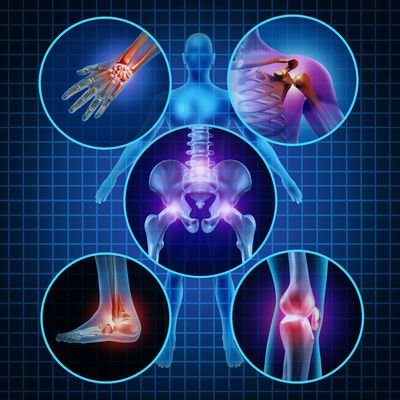Revolutionizing The Treatment Of Sports Injuries: The Remarkable Benefits of Regenerative Medicine
Regenerative medicine has emerged as a groundbreaking field, offering new hope and innovative solutions for athletes and sports enthusiasts recovering from injuries. Regenerative medicine focuses on harnessing the body's natural healing abilities to repair damaged tissues and promote long-lasting recovery. The traditional medical approach is to immobilize the injured area, prescribe anti-inflammatories and pain medications, recommend physical therapy, and, if all that fails, perform surgery. By promoting the natural and powerful ability of the body to heal, regenerative medicine can be the most effective strategy to not only recover from an injury, but to heal better, faster, and stronger. At Sarasota Sports Medicine, we utilize a revolutionary process of regenerative therapies that gets our patients off the sidelines and back in the game in record time.
Here are five advantages of regenerative medicine treatments.
1. Accelerated and Enhanced Healing:
Class IV Deep Tissue Laser Therapy is a non-invasive, painless, and safe treatment that uses light energy to stimulate healing and reduce pain. Laser therapy stimulates several factors including; the release of endorphins, stimulates increased blood flow, and activates healing factors.
Acoustic Shockwave Therapy (AST) is a powerful treatment that utilizes high powered soundwaves to break up scar tissue and adhesions. In many chronic injuries, there can be a build up of scar tissue. Scar tissue has three characteristics that contribute to pain. Scar tissue is weaker tissue than normal, healthy tissue, it is more susceptible to reinjury, and it contains sensitive nerve endings that contribute to chronic pain. By breaking up scar tissue, AST stimulates growth factors and simulates the body to replace the scar tissue with normal tissue.
Injection techniques, such as Prolotherapy and platelet-rich plasma (PRP) therapy, stimulate and accelerate the body's natural healing processes. Prolotherapy involves the injection of a dextrose/saline solution into the injured area, stimulating the body’s immune system to further activate healing factors that build collagen and new tissue. PRP therapy involves injecting concentrated platelets into the injured area, releasing growth factors and cytokines that speed up tissue regeneration.
2. Tissue Regeneration and Repair:
One of the most remarkable benefits of our process is its ability to regenerate and repair damaged tissues, such as tendons, ligaments, and muscles. By combining Laser and injection therapies, our process stimulates the body to replace and rebuild injured or degenerated tissue. This targeted approach not only restores function but also improves the overall quality of the healed tissue, with less scar tissue ultimately reducing the risk of reinjury.
3. Non-Invasive and Minimally Invasive Procedures:
Regenerative medicine offers non-invasive or minimally invasive procedures as alternative treatment options to invasive surgeries. These procedures significantly reduce the risks associated with traditional surgical interventions, such as infection, scarring, and lengthy rehabilitation periods. By utilizing injections or precise placement of cells, regenerative medicine allows athletes to return to their sports activities faster, without compromising their long-term health.
4. Long-Term Pain Relief:
Chronic pain resulting from sports injuries can be debilitating and hinder an athlete's performance. Regenerative medicine techniques provide long-term pain relief by addressing the underlying cause of the pain, rather than simply masking the symptoms. By promoting tissue repair and reducing inflammation, regenerative therapies offer athletes a sustainable solution to manage pain, enhancing their overall well-being and quality of life.
5. Potential to Prevent Future Injuries:
Apart from treating current injuries, regenerative medicine holds the potential to prevent future sports-related injuries. By optimizing tissue quality and strength, regenerative therapies can enhance the body's resilience and reduce the likelihood of reinjury. This proactive approach empowers athletes to maintain peak performance levels while minimizing the risk of setbacks, ultimately prolonging their careers.
How Does Regenerative Medicine Compare With Surgery?
For example, according to standard orthopedic guidelines for a rotator cuff tear, you can expect the following;
6 - 8 weeks of immobility - following shoulder surgery, you’ll be in a sling for 6 to 8 weeks with strict instructions to keep your shoulder immobile.
8 - 10 weeks to attain “normal activity” - that means activities of daily living (ADL’s) including, can you dress yourself, feed yourself, and take a shower.
12 to 24 weeks to regain a fully active lifestyle - If you’re an active person, you’ll be out of the game for up to 6 months.
On the other hand, our process at Sarasota Sports Medicine has many advantages including;
Our process works WITH your body, not against it. By stimulating healing, our process provides for better outcomes and faster recovery.
You can maintain a reasonably active lifestyle with no downtime or immobility. You can continue to be active within your pain tolerance.
Our process actually heals tears and damaged tissues, making them stronger and more resilient.
At Sarasota Sports Medicine, regenerative medicine has revolutionized the landscape of sports injury treatment, offering athletes a range of benefits that surpass traditional methods. With accelerated healing, tissue regeneration, non-invasive procedures, long-term pain relief, and the potential to prevent future injuries, regenerative medicine provides athletes with a holistic approach to recovery. As this field continues to advance, athletes can look forward to a future where sports injuries no longer mean the end of their careers but rather a temporary setback on the path to success.
For more information, call our office by clicking the link below.

